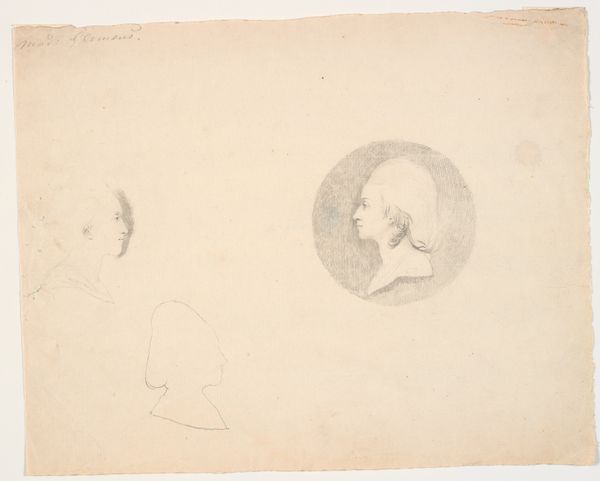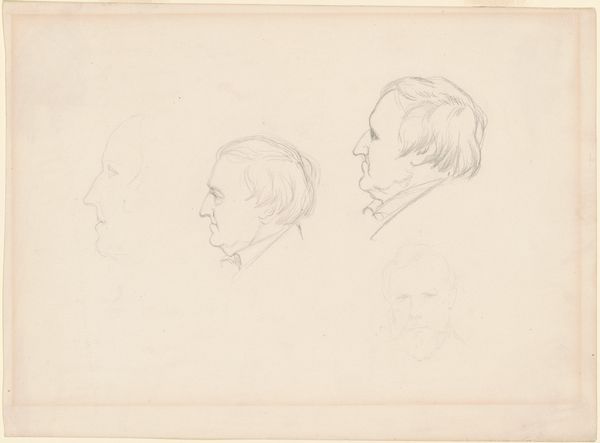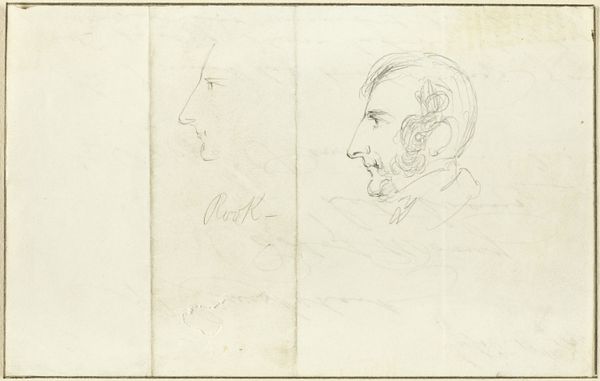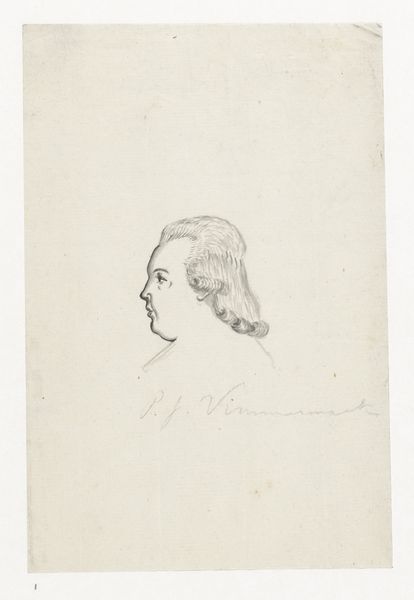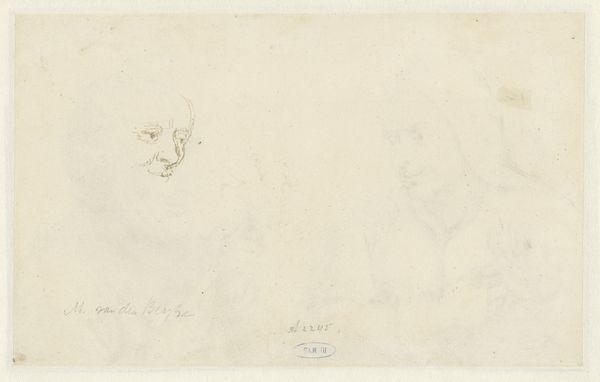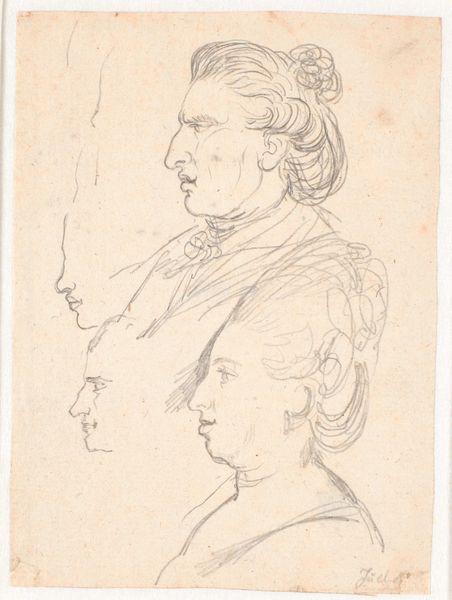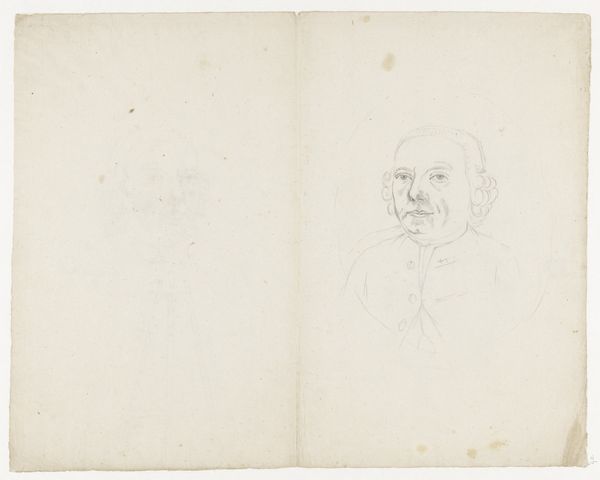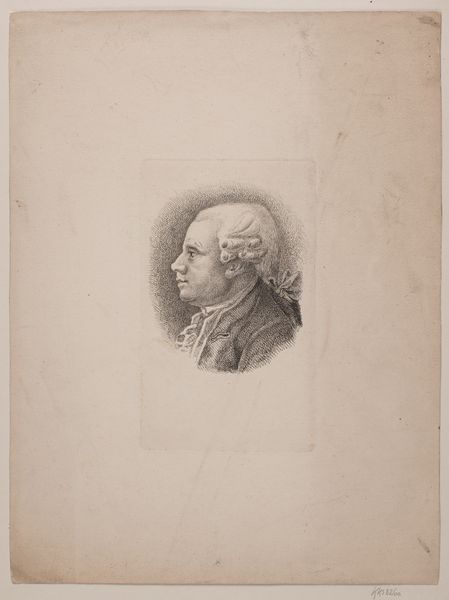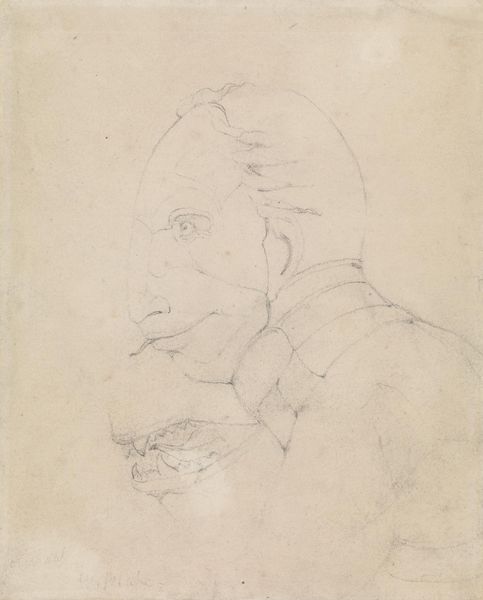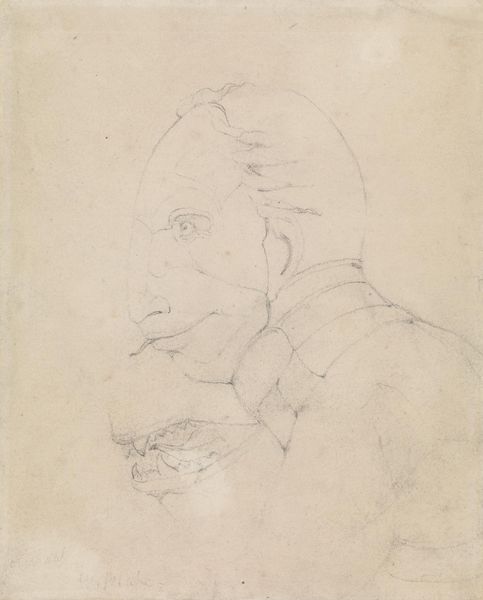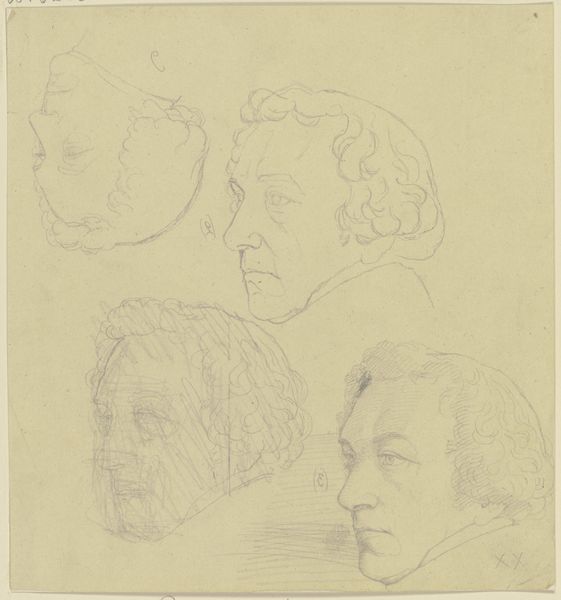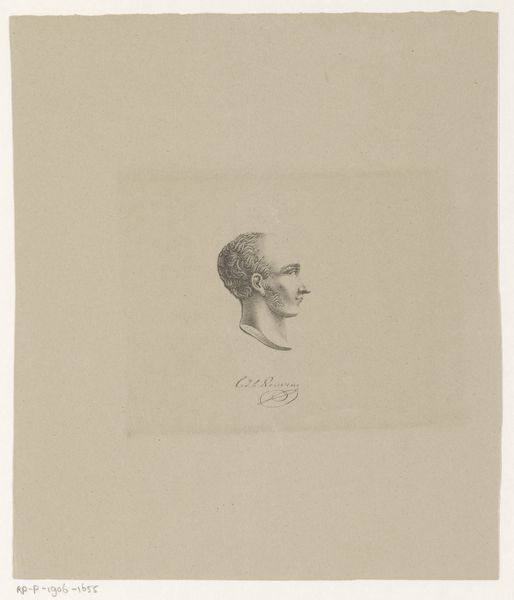
drawing, paper, pencil
#
portrait
#
drawing
#
neoclacissism
#
sketch book
#
paper
#
sketch
#
pencil
#
sketchbook drawing
Copyright: Rijks Museum: Open Domain
Editor: This sketchbook page features a portrait of Gioacchino Rossini, rendered in pencil, probably around 1819. It feels quite informal, like a glimpse into the artist’s process. What can you tell me about this particular sketch? Curator: Focusing on the materials, notice the laid paper itself and the varying pressure of the graphite. Consider this "drawing" not just as a representation but also as a *thing* produced. We should be looking at the socioeconomic conditions that made the paper and pencil available. This was a time when pencils, with their refined graphite, were becoming increasingly accessible to a wider bourgeois public. The rise of industrial manufacturing processes influences what materials were available to artists and therefore affects artistic styles. Editor: That's fascinating. So the medium itself tells a story of changing production and consumption habits? Curator: Exactly! Think about what this cheap accessibility means for artistic training. Artists start working en plein air or sketching in cafes with ease, something unthinkable before because of logistical and financial restrictions on materials. The image becomes more and more portable. Notice also, this is part of a bound book, like a pre-photographic Instagram for artists! Editor: So it is about the rise of mass-produced goods transforming the art world in terms of art creation? Curator: Absolutely. It's about understanding that even a simple sketch embodies a much larger economic and social narrative tied to material production and how new tools enable artistic possibilities. Editor: This provides such an interesting background to art and materials beyond just aesthetics, it makes me want to go and analyze materials on more sketches! Curator: Exactly!
Comments
No comments
Be the first to comment and join the conversation on the ultimate creative platform.

